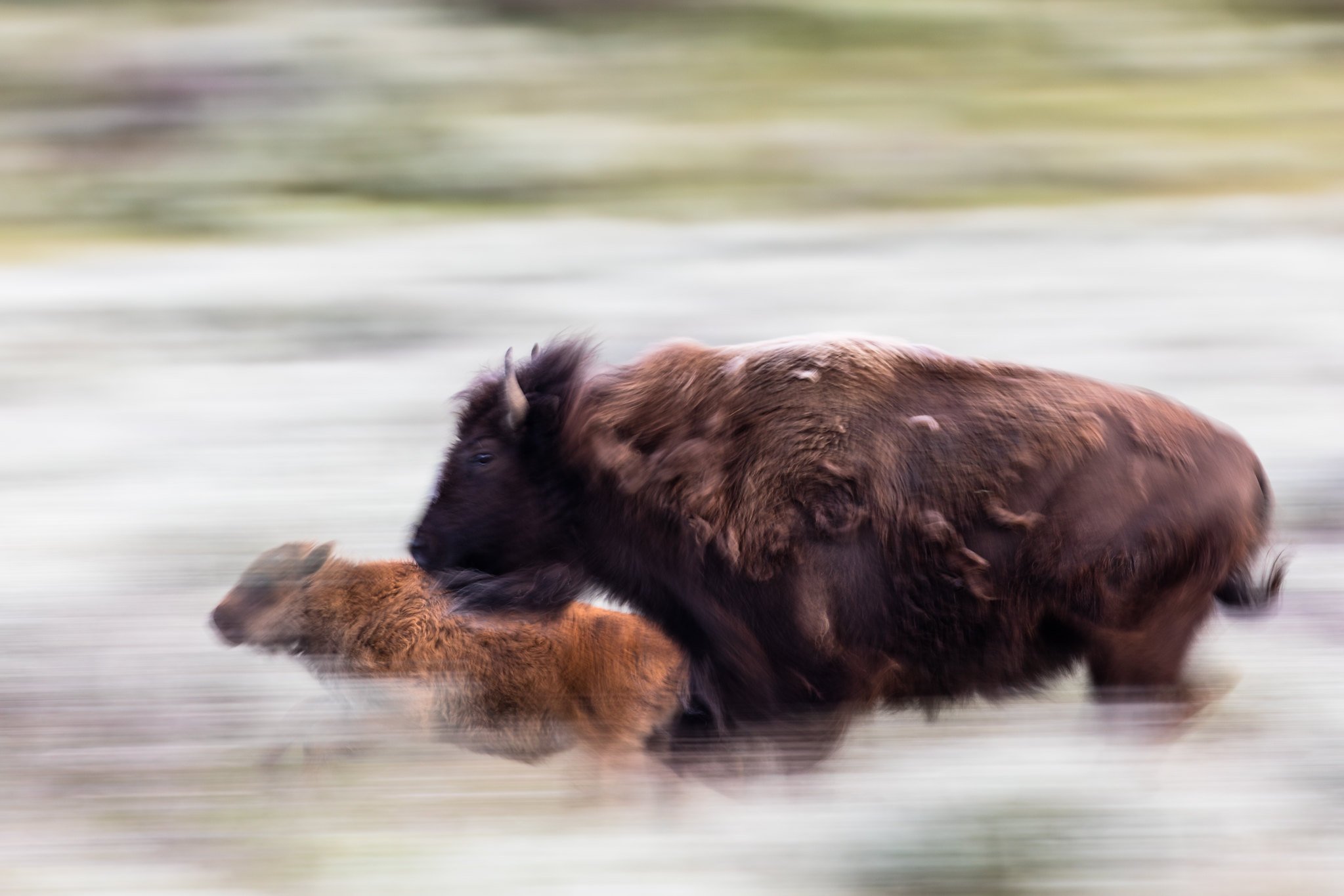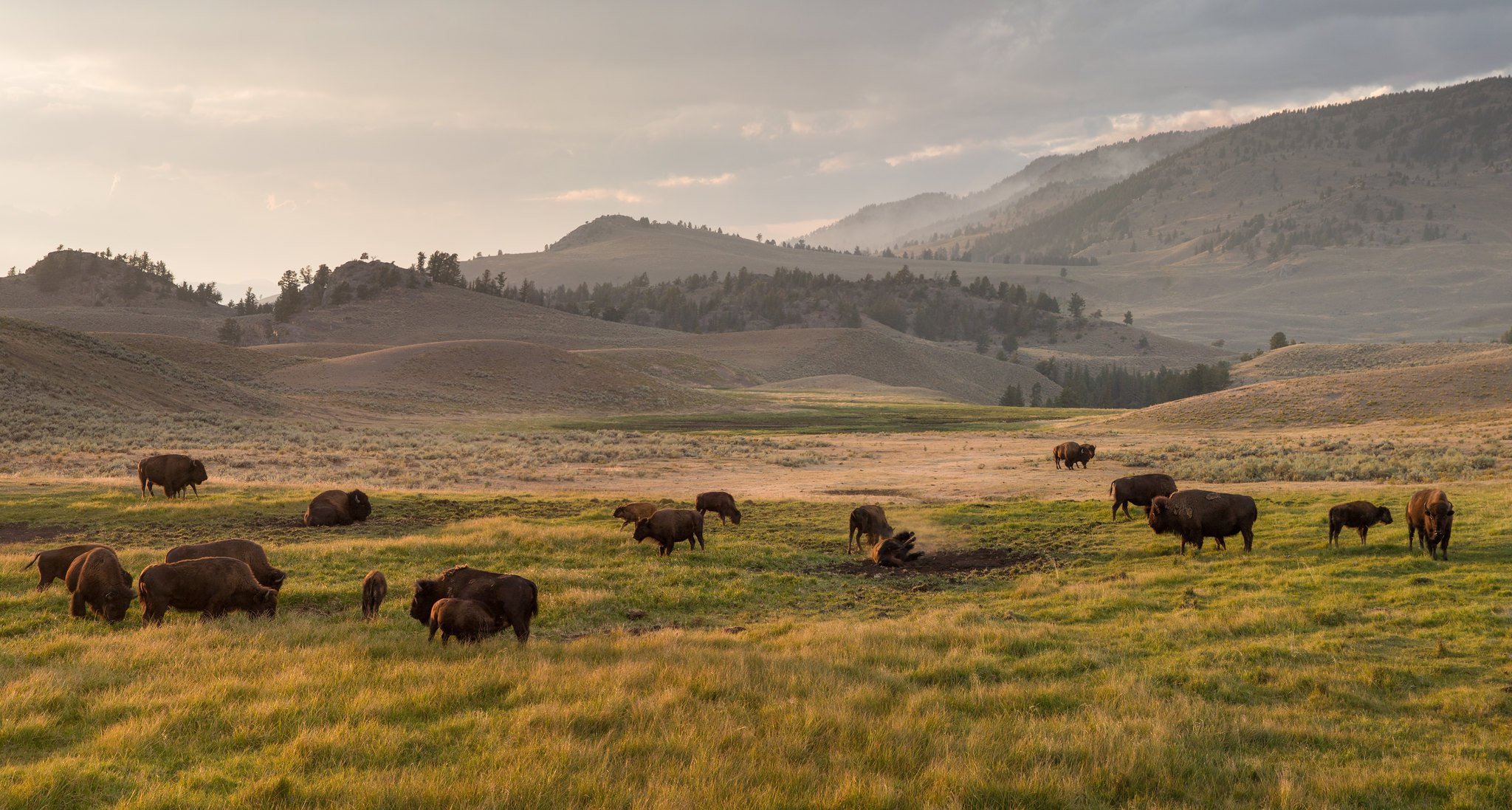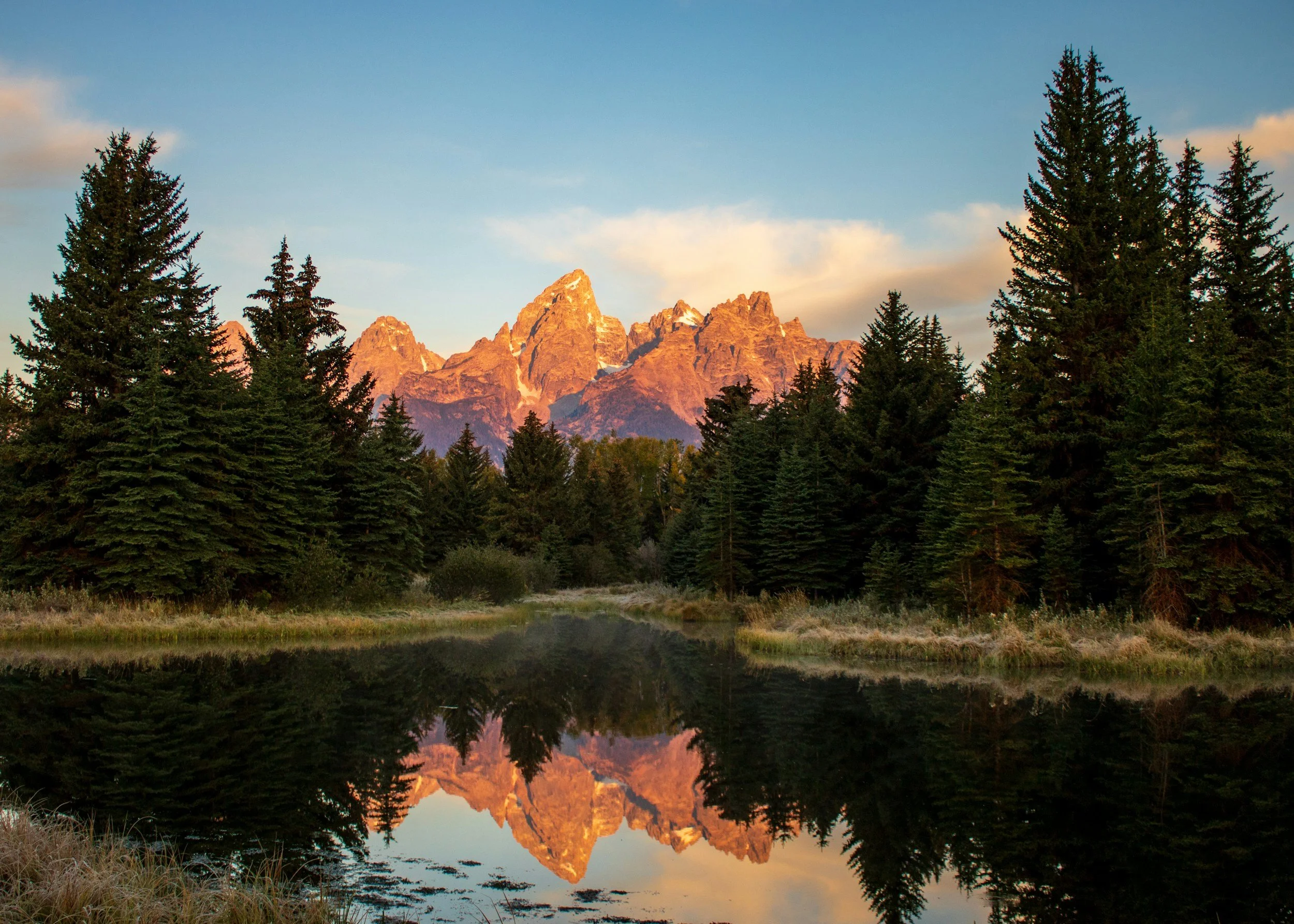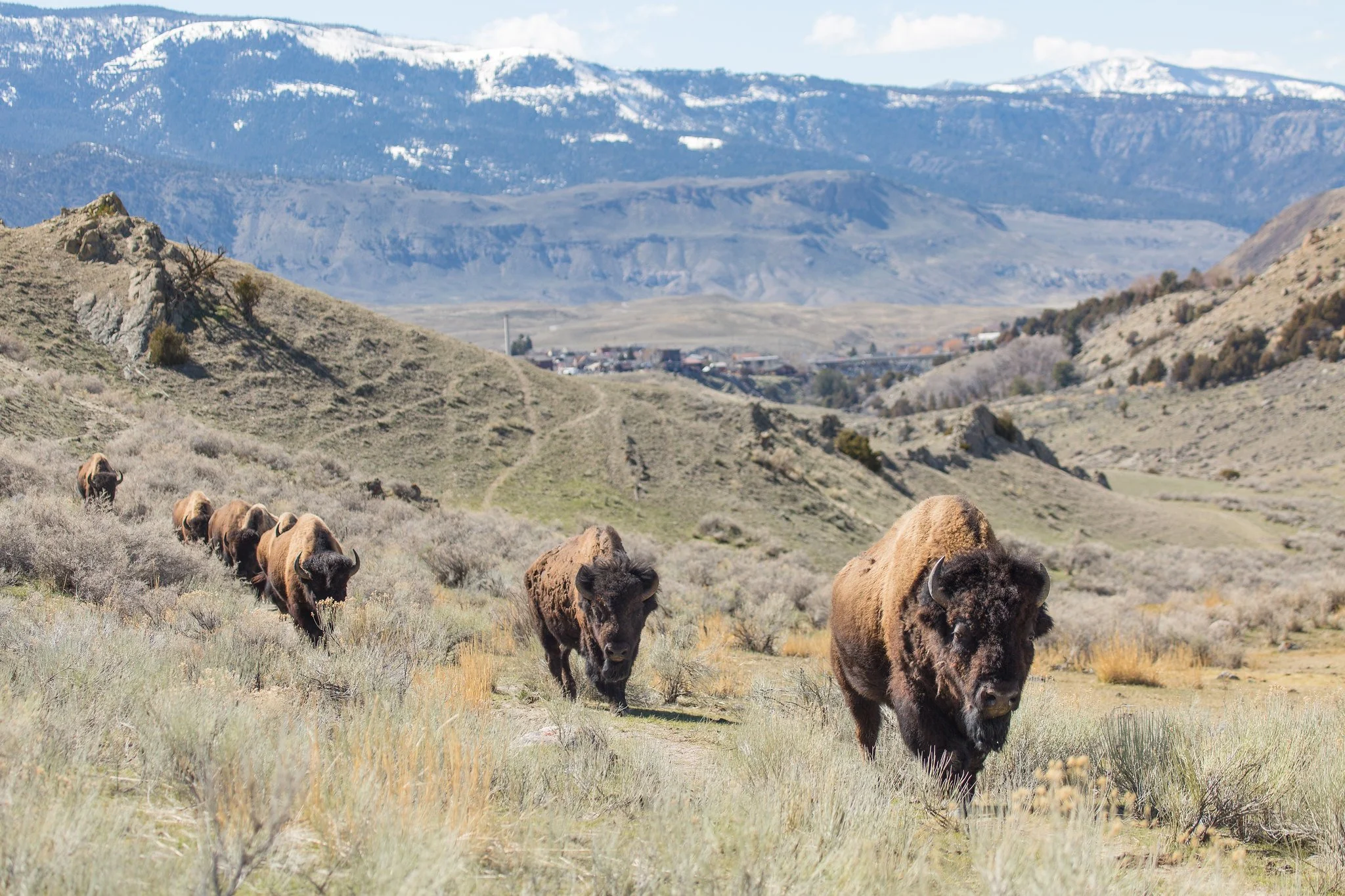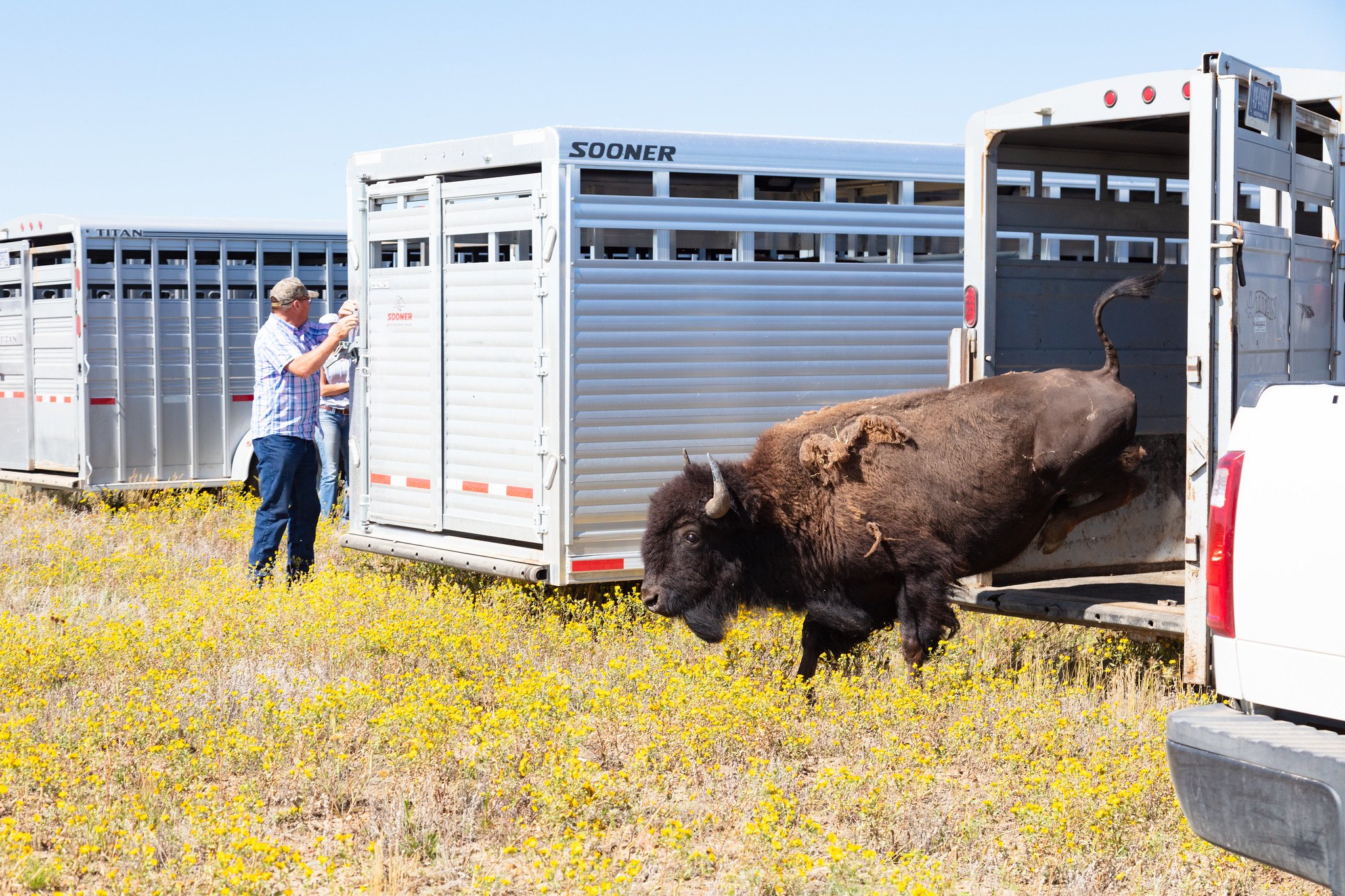
Restoring Yellowstone Bison
The Last Truly Wild Bison
Yellowstone’s wild bison are icons of the American West, providing a glimpse back in time to an age when vast herds roamed across North America. They draw millions of visitors to the park each year, helping tick off bucket list goals and inspiring awe and reverence.
Yellowstone bison are widely considered the last truly wild herd of American plains bison in existence. Their lives are still shaped by natural forces such as predation, harsh winters, a vast and varied landscape, and complex herd dynamics.
As ecosystem engineers, bison shape the very landscape they roam – managing and manipulating plant life, augmenting soil health, and nourishing the ecosystem.
They play a vital ecological role in keeping Yellowstone in dynamic balance. Their genetic significance is also unparalleled; while most bison across America carry significant cattle DNA in their genome, Yellowstone bison are the most genetically intact bison in existence, with over 99.7 percent genetic purity according to the latest research.
Yellowstone bison are also inextricably tied to the Native people and cultures that shared the landscape with them for millennia. The roughly 5,000 bison living in Yellowstone today are descendants of just two dozen individuals that found refuge in the park’s rugged interior while European settlers and the American military systematically killed millions of bison through market hunting and with the intention of eliminating Tribes that depended on the species.
With a healthy Yellowstone population poised to lead the way in restoring bison to the landscape of the West and initiate the return of bison to the center of the cultural, spiritual, economic, and nutritional sovereignty of Tribes, the Yellowstone population is a conservation success story – but significant barriers remain to more broad-based restoration of the species.
Fear and Politics
While wolves, weather, and food supply shape the lives of bison inside Yellowstone, outside the park their biggest threats come from archaic wildlife laws, fears around disease transmission, and volatile state politics.
As Yellowstone bison follow their seasonal migration instincts, they seek lower elevation habitat outside the park boundaries in Montana each winter. But within the Montana livestock industry there are significant fears around the possibility of bison transmitting brucellosis to livestock. Brucellosis is a cattle-born disease carried by many Yellowstone bison as a result of historic contact with cattle. Though there has never been a recorded instance of a wild bison transmitting brucellosis to cattle – and though elk also carry the disease – bison’s movements in Montana are severely restricted as a result.
In 1995, the state of Montana sued Yellowstone National Park over the issue of bison crossing the park boundary and moving onto private, state, and Forest Service lands in Montana. Five years later, the Interagency Bison Management Plan (IBMP) was implemented to drastically limit Yellowstone bison numbers to between 3,000 and 3,500 – not to reflect the ecological carrying capacity of the land, but as a tool for keeping bison in the park and preventing them from dispersing into Montana.
As a result, for the last two decades, Yellowstone National Park has been forced to manage its bison population through an annual slaughter program.
Today, new information, better available science, and a steady shift in attitudes toward bison across the landscape make the current bison management regime outdated and unacceptable.
Yellowstone National Park is spearheading alternatives to slaughter that recognize the ecological importance of Yellowstone bison, maintain commitments to provisions within the IBMP, and, crucially, contribute to supporting Native American access to and stewardship of these culturally incomparable animals.
Investing in the Bison Conservation Transfer Program
The Greater Yellowstone Coalition is committed to helping Yellowstone National Park move away from managing wild bison through slaughter. As the park develops increasingly innovative approaches to improving bison management, the Greater Yellowstone Coalition is hard at work helping create conditions for more Yellowstone bison to leave the park alive.
Among the most exciting and ambitious components of Yellowstone’s new bison management efforts is the Yellowstone Bison Conservation Transfer Program.
The Bison Conservation Transfer Program takes Yellowstone bison that have tested negative for brucellosis and moves them through a series of testing and holding facilities designed to ensure they are healthy and remain disease-free.
It is a long and complex process that takes care and dedication to facilitate. Once the animals have gone through one and a half to three years of the program, depending on their age and sex, and are certified as brucellosis-free, they are legally allowed to pass through the state of Montana to receiving facilities on the Fort Peck Indian Reservation to complete their remaining year of quarantine. From there, the InterTribal Buffalo Council facilitates their distribution to Tribal lands across North America. In their new homes, these bison strengthen the genetics of Tribally managed herds and restore the connection between wild bison and the people and communities who have depended on them for millennia.
In 2021, the Greater Yellowstone Coalition successfully raised $250,000 to contribute to the expansion of the Bison Conservation Transfer Program’s quarantine facility. Alongside a $500,000 commitment from the park and another $250,000 raised by our partners at Yellowstone Forever, this funding supported facility upgrades that nearly tripled the capacity of the program to accept and manage bison. This expansion means that even more bison are now being diverted from slaughter and restored to additional parts of their ancestral range.
Watch as a herd of Yellowstone bison cows and calves are released on the Fort Peck Indian Reservation
There is hope for the meaningful restoration of American bison to Tribal and public lands across North America. Genetically incomparable, culturally significant Yellowstone bison will lead the way in the restoration of the species, representing one of the most substantial and significant wildlife success stories for generations.
The Greater Yellowstone Coalition is proud to be hard at work helping make this possible.
Read more about our bison conservation efforts.
